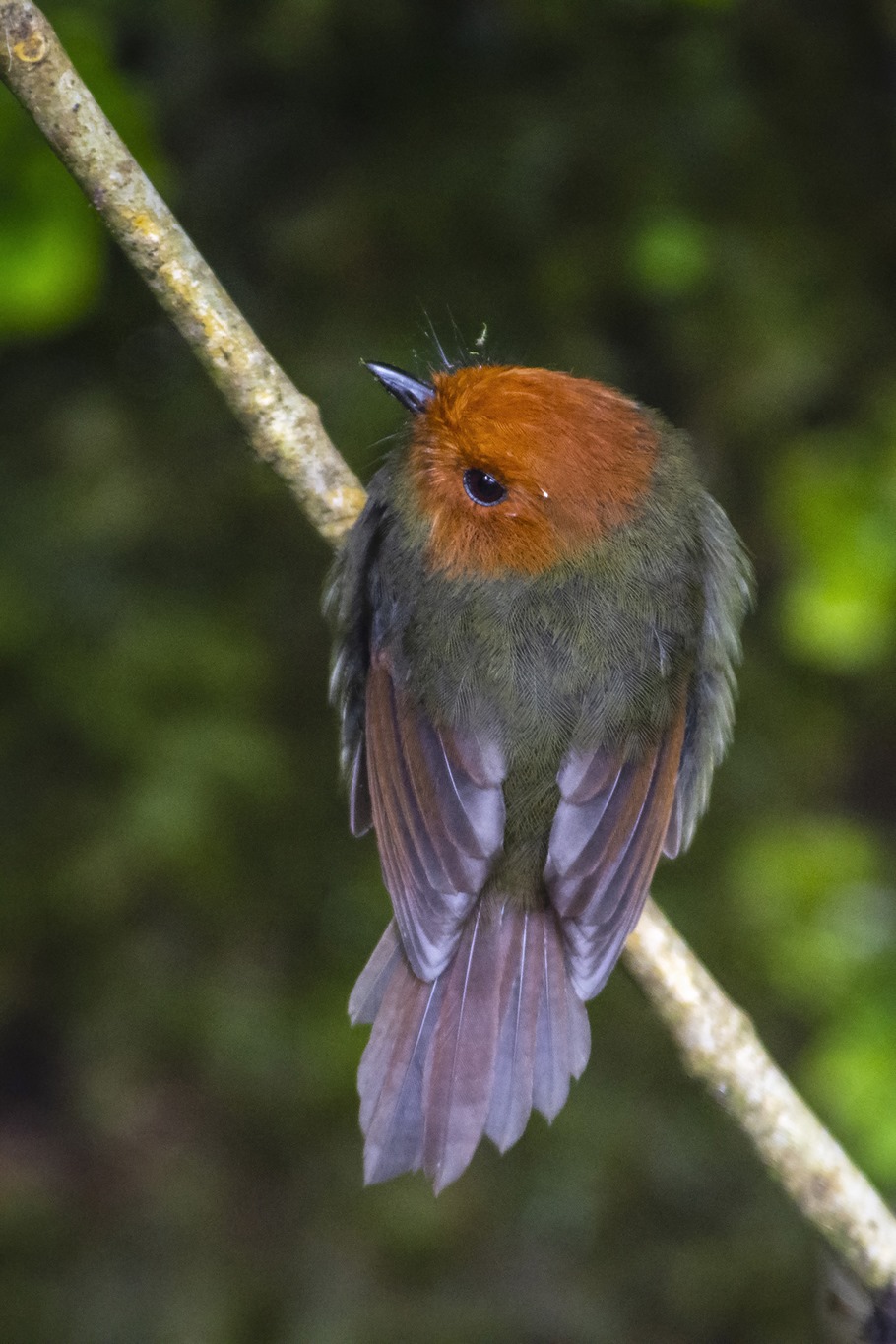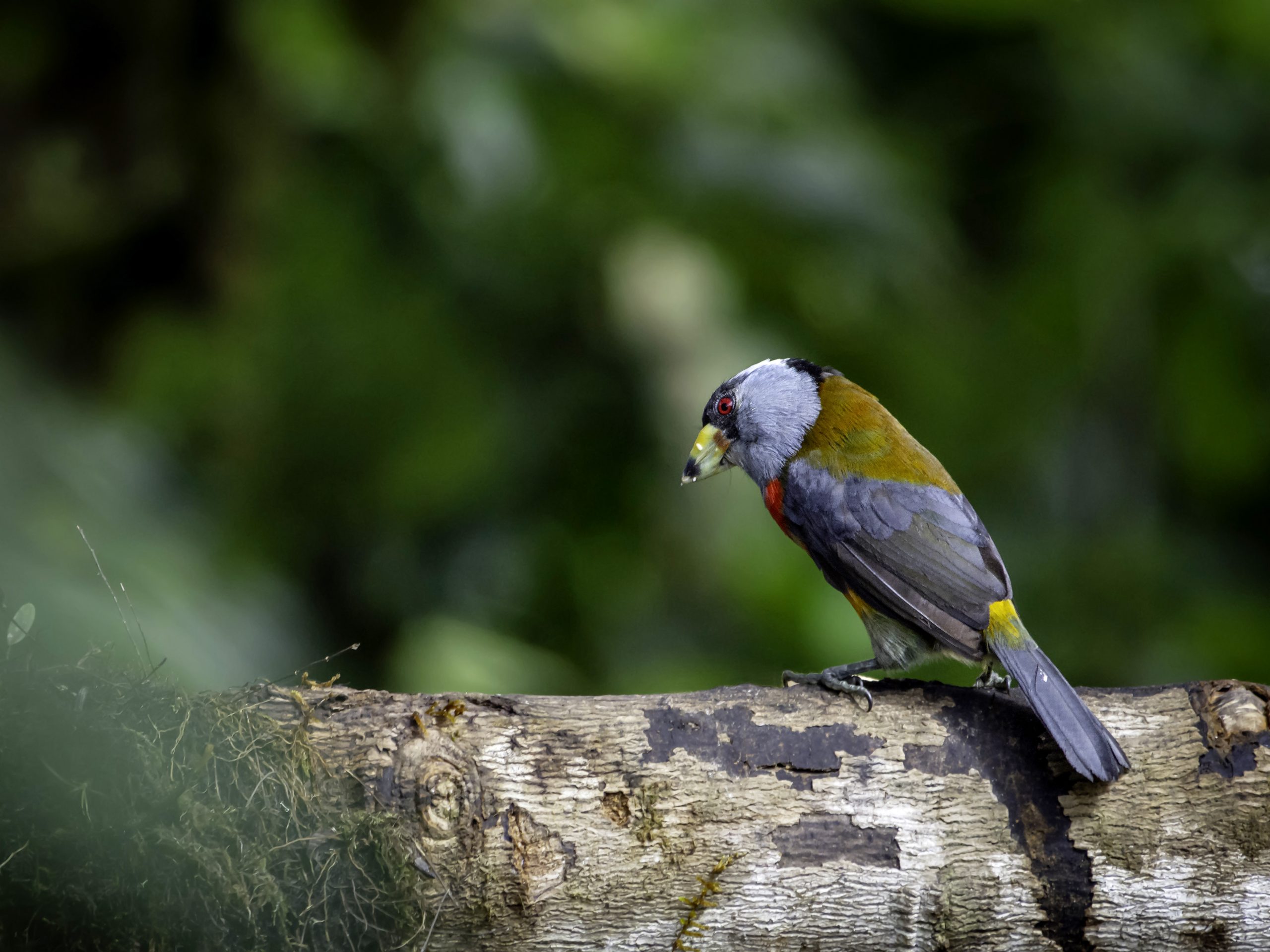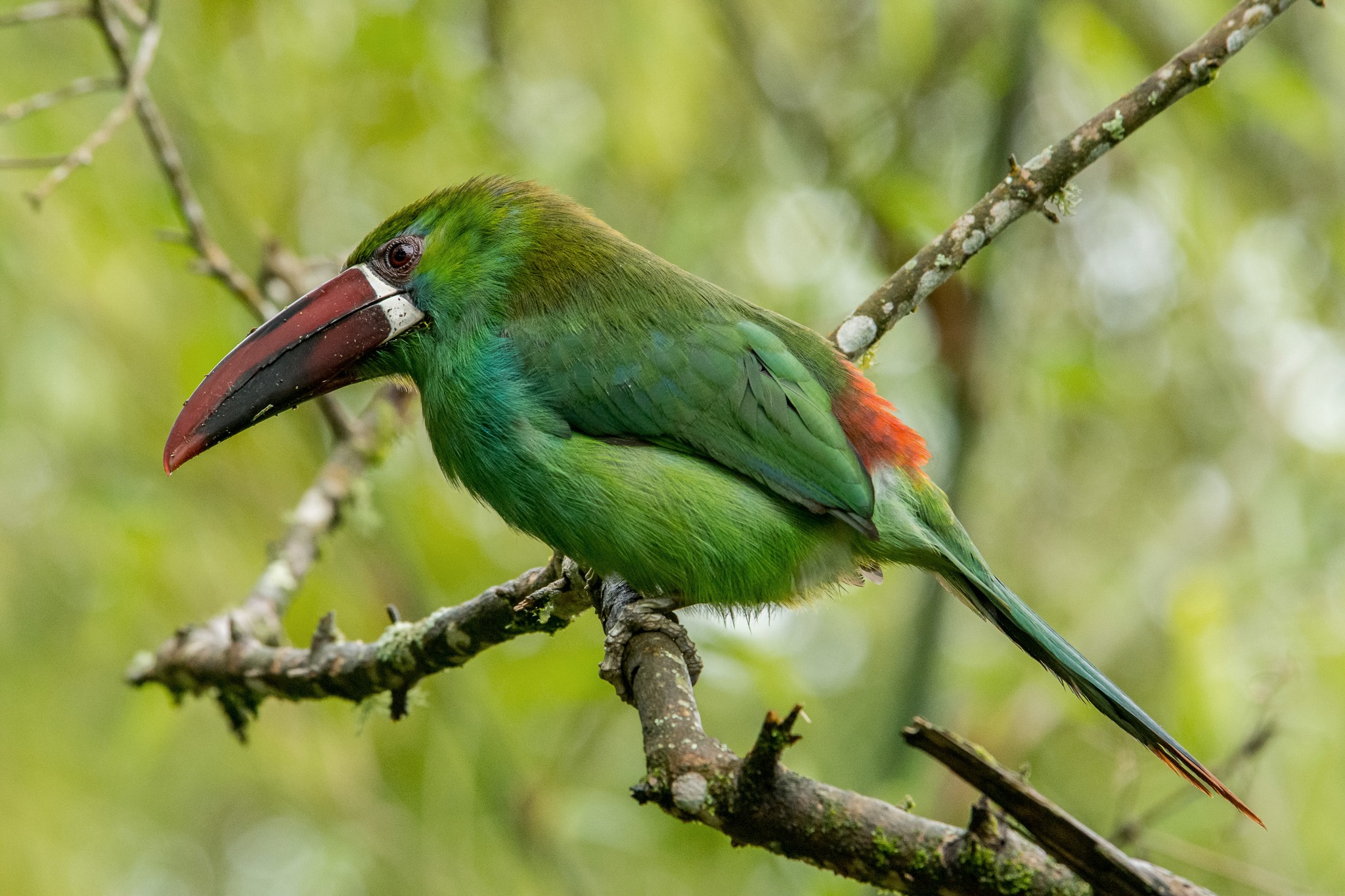It is the only hummingbird in the highlands with completely white underparts. Her name Amazilia was established in honor of Amazili, who was an Inca heroine in Jeam Marmontel’s novel Les Incas, ou la destruction de l’Empire du Pérou. His French epithet was established in honor of Francia Bourcier, the daughter of the naturalist Jules Bourcier, an expert in hummingbirds.

Bird from the highlands of the Andes, silent and inconspicuous despite its large size. Momotus comes from the specific name Ramphastos momota and the epithet Aequatorialis is a term from the Latin language that means equatorial.
It is a species of bird in the family Tyrannidae.
Pseudotriccus: Gr. pseudos= false and trikkos= unknown small bird. ruficeps: L. rufus= red, ruddy and ceps= headed.
The black-thighed puffleg (Eriocnemis derbyi) is a species of hummingbird in the Trochilidae family. It is found at humid forest edge and ravines in the Andean highlands of Colombia and northern Ecuador. It is threatened by habitat loss. As suggested by its name, the feathering around its legs is black, which is unique among the pufflegs. Otherwise its plumage is green with a contrastingly black tail.
For a long time, it was considered an endemic species to Colombia although recently a population was found in the north of Ecuador. Its name Grallaria derives from the modern Latin grallarius = stiltwalker and the epithet rufocinerea from the Latin roots rufus = rufous and cinereus = ash gray.
It is a very striking small bird of mainly black and white coloration that is found east of the Andes. The term cayanus was used in the principles of ornithology to refer to a bird of doubtful origin, probably from the Amazon.
The toucan barbet (Semnornis ramphastinus) is a barbet in the family Semnornithidae native to the humid montane forests of western Ecuador and Colombia.
The bananaquit (Coereba flaveola) is a species of passerine bird of uncertain relation. It is tentatively placed in the tanager family, but classified as incertae sedis by other authorities such as the American Ornithologists Union. Its classification is debated, and it is often placed in its own family: Coerebidae. It has recently been suggested the bananaquit should be split into three species, but this has yet to receive widespread recognition. This small, active nectarivore is found in warmer parts of the Americas, and is generally common.
The brown Inca (Coeligena wilsoni) is a species of bird in the Trochilidae family, found in Colombia and Ecuador.
It is distinguished from other green toucans by its red rump and its song is a quasi, something nasal and repeated. Its name Aulacorhynchus comes from the Greek aulax which means furrow and rhunkhos which means beak. The epithet haematopygus comes from the Greek haima, which means blood, and pugus, which means rump.












